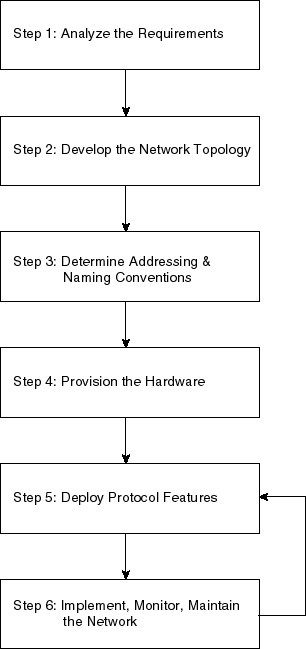Advanced OSPF Design Concepts
Adaptability Adaptability refers to your network’s capability to respond to changes. In most cases, adaptability refers to your network’s capability to embrace new technologies in a timely and efficient manner. This becomes extremely important as the network ages because change within networking is racing forward at breakneck speeds. Though it is not necessary to always be on the leading or bleeding edge—there is a lot to be said for letting others find the bugs! Manageability To provide “true” proactive network management is the goal here. The network must have the proper tools and design to ensure you are always aware of its operation and current status. Cost Effectiveness In this case, I have saved the true bottom line of network design for last. The reality of life is that budgets and resources are limited, and building or expanding the network while staying within the predetermined budget is always a benefit to your career and proper network design. Although there are five basic goals of network design that can be followed in any situation, I think there also should be a certain mindset during the process. This mindset is regarding the actual technology you will be using. It is very important to use state-of-the-art technologies whenever possible, though this does not mean to use unproven or inadequately tested technology. The reasoning behind this is that by spending a little extra money up front, you are investing with an eye to the future knowing that the network you are building will be able to grow, from a technological standpoint, longer than otherwise possible. Network Design IssuesUp until this point, the various network design goals and the methodology needed to make the goals become a reality have been discussed. There are also certain design issues that you must consider when working through the network design process:
Network Design MethodologyThere are six common steps that can be used to design your OSPF network, or any network for that matter. This are not set in stone and will not guarantee the “perfect” network, but they will provide you with realistic steps and considerations that if taken into account will make for well designed network. These steps will also help you avoid getting caught up in all the “bells and whistles” available in the new-enhanced-ultra-secret- turbo-series-network-equipment which is the answer to all your networking needs. These steps to designing a network have been proven not only over time, but also through countless networks that have been designed and implemented based upon this standard.
Although your network might not have the technology du jour, it might not really need it if you objectively determine the needs of a network by following this design methodology (as shown in Figure 7-2).
|
EAN: 2147483647
Pages: 200
